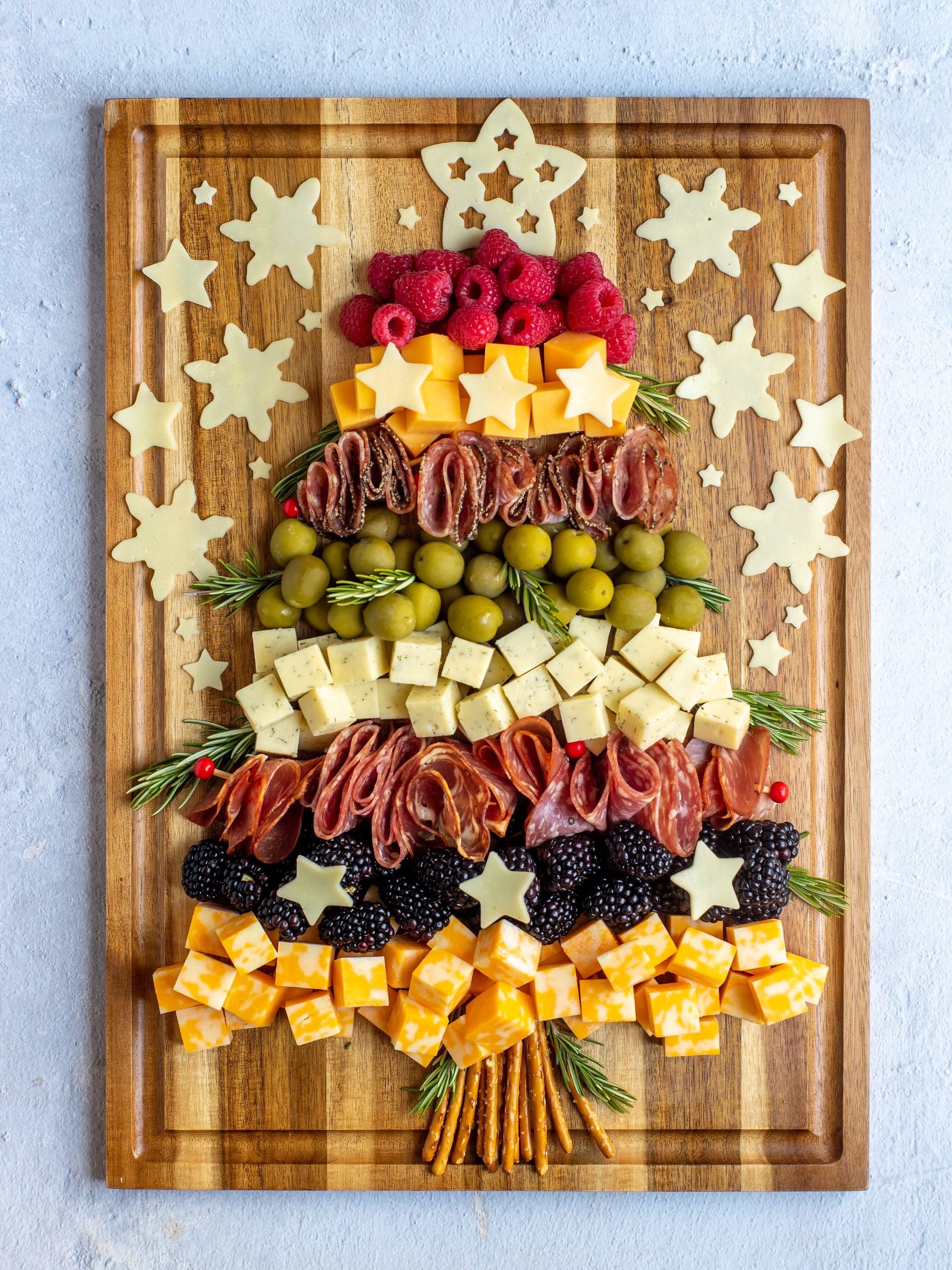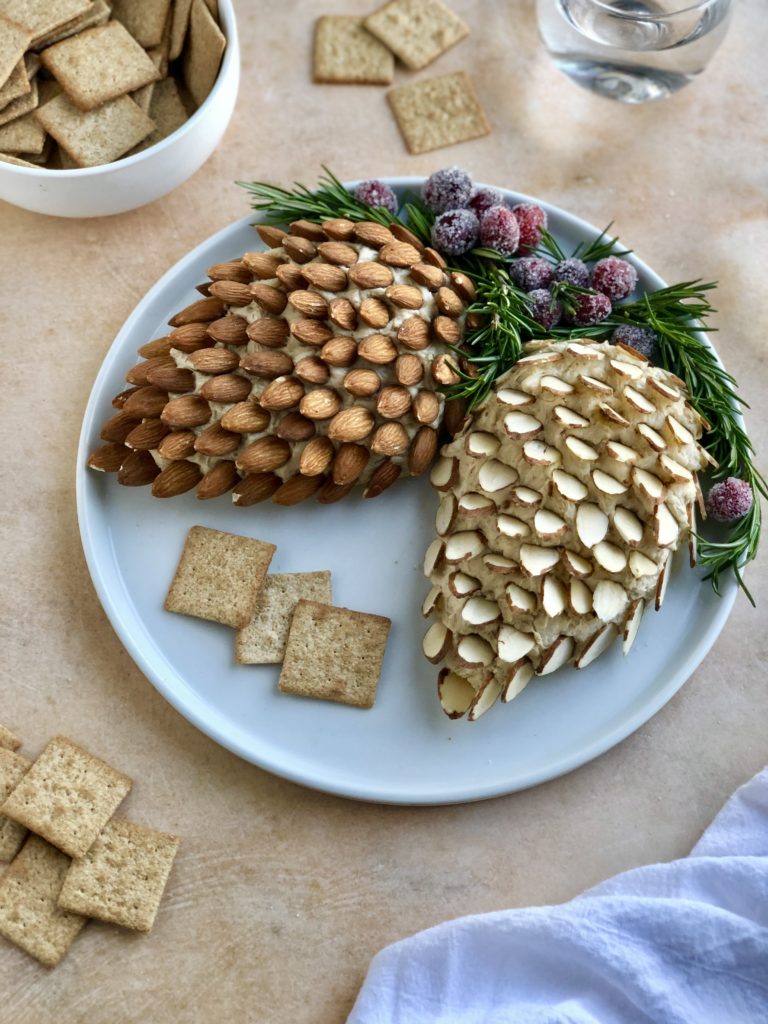Gather ‘Round the Charcutertree: A Guide to Holiday Boards and Festive Designs to Try
Charcuterie queen Meg Quinn shares her tips and tricks for a festive, approachable holiday Charcutertree and other charcuterie board designs.

Courtesy of Meg Quinn
“People eat with their eyes,” says Meg Quinn, a food stylist who has been in the holiday spirit since well before Halloween. She’s thinking about one of her favorite Christmas starters: a charcuterie board.
Meg Quinn has been recognized on Instagram for her charcuterie skills and runs the blog Ain’t Too Proud To Meg, but the Angeleno doesn’t classify herself as an expert by any means. She is crafting up cheeseboards for the everyday person. “I want to make charcuteries easy and attainable for people,” says Quinn. She shared with us three of her favorite Christmas boards along with tips, tricks, and necessities to keep in mind when designing your own.
Quinn “loves to entertain” but has “not always been the best cook,” so making cheeseboards was her way to “pull the wool over people’s eyes,” she says. “When people come to your house and are impressed by the thoughtfully put together cheeseboard, they aren’t thinking about the fact that none of it was cooked.” Cheeseboards are a great meeting point between entertainers and novice cooks, she says.
The Charcuterie Christmas tree or Charcutertree for short has a lavish display but is simple in its design.
“A cheesemonger will never use a cookie cutter to make snowflake shapes to add to a board,” Quinn says, laughing. “But I use them to create the unique design that is my Charcutertree.” Her goal with the tree board was to create a design that was easy to make but also to take a cheeseboard to the next level. “I’m aiming to take the pretentiousness away from cheeseboards.”

Courtesy of Meg Quinn
When picking out your cheeses, Quinn wants you to consider your own palate. She advises heading to your local grocery store (she shops at Trader Joe’s) and trying the deli’s leftover cheese ends so you can taste the different flavors until you find your palate’s match. “If you’re serving something at your house, make it personal,” she says. “Don’t serve blue cheese if you don’t like blue cheese.” You want to like what you’re serving because people can see the authenticity. “If you’re excited about a gouda and tell your guest that they have to try it, it’s so good, then your guests are going to want to try that,” she adds.
She does have staples when it comes to curating her cheeses. “I have a general rule: Have hard, soft, aged, and fresh cheese on every plate.” Quinn does have a note of caution about the true purpose of a cheeseboard: “Since it is a social dish, make sure to put a crowd-pleaser or two” on your board. For versatile and aged cheese, go with a gouda or cheddar; for soft cheese, go with a goat or brie.
To assemble a charcuterie, she starts with the basics. “Instead of laying out the cheese blocks and expecting guests to do all the work, “cut it yourself.” And use the cutting to your advantage by creating unique designs and textures. For example, Quinn says “you can easily slap a slice of salami down but you can just as easily fold it a couple of times and display it in a way that’s beautiful and doesn’t take up too much time.” You want to make a board thats “easy for your guests to grab,” Quinn adds.
Next, you’ll want to go beyond the cheese and meat. “Adding olives, fig, jam, honey, and dip takes the taste to the next level while also making your boards look more impressive and curated,” Quinn says. When you add items that your guest may not expect it “opens up the conversation—did you try this with this?” she explains. One of her secret ingredients that always takes guests by surprise? Rock candy. “I believe in mixing salty and sweet,” says Quinn. For a holiday twist, she suggests adding candy canes, or peppermint patties, while using cookie cutters to create seasonal designs and shapes.
Once you’ve taken your guests by sweet surprise it’s time to add some color to your board. Meats and cheeses are mostly whites, reds, and pinks, so Quinn encourages the addition of produce. “Produce is important because it adds color and texture,” says Quinn. Grapes, dried oranges, and other fruits solidify your cheeseboard as a piece of art.
Finally, like a freshly shaken cocktail, add a bit of garnish. “Garnish is so simple even someone in a college dorm can do it,” Quinn says. “If you can pick up a pack of rosemary you can easily add color and a fancy element.”
We are just scratching the surface of Meg Quinn’s charcuterie skills. Her cheeseboard deck, which you can pre-order on Amazon, has the Charcutertree and more. The deck’s design is similar to recipe cards so you can take one to the grocery store with you as a substitute for a “to buy” list. Some charcuterie categories you can find in the deck are holidays, breakfast and brunch, lunch, dinner, and more. “I’m trying to show that any meal can be served on a cheeseboard and charcuterie is just a starting point,” says Quinn.
See each festive board below with instructions how to make them at home.
Christmas Charcutertree

Courtesy of Meg Quinn
Grab your friends and family and gather around the Charcutertree.
Get the recipe and instructions here.
Charcuterie Chalet

Courtesy of Meg Quinn
For easy decorating and a dynamic display, build your chalet on a lazy susan and use a thin wire to help hold the sage leaves in a wreath shape and find a festive red and white string to tie together the “log” piles.
Get the recipe and instructions here.
Pinecone Cheese Ball

Courtesy of Meg Quinn
The Pinecone cheese ball is just as cool-looking as it is delicious.
Get the recipe and instructions here.
We only recommend things we love. If you buy something through our site, we might earn a commission.
Search All of Sunset’s Recipes
Read the Current Issue Here!
Get one year of Sunset—and all kinds of bonuses—for just $29.95. Subscribe now!

